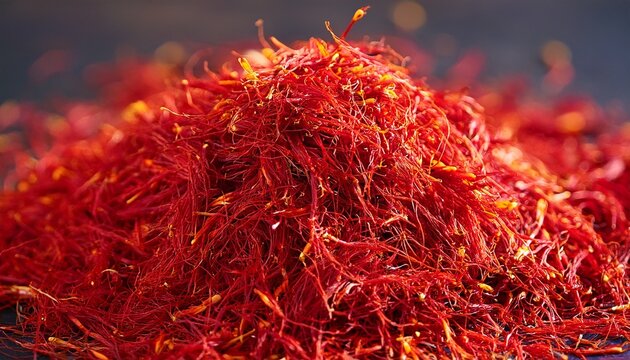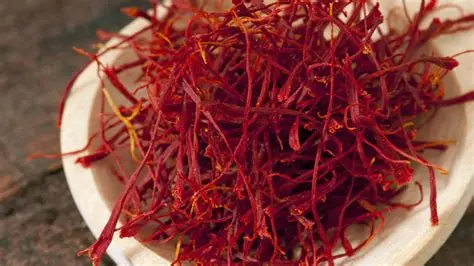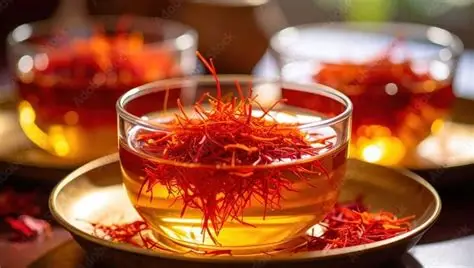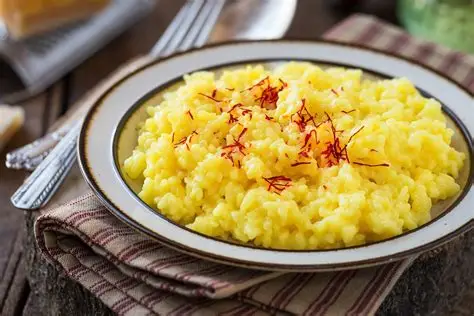
In the vibrant tapestry of global cuisine, few ingredients shimmer as brightly as saffron—the crimson treasure harvested from the delicate stigmas of the Crocus sativus flower. For saffron foodies, this “golden spice” isn’t just a pantry staple; it’s a passion, a ritual, and a gateway to flavors that whisper of ancient trade routes and sun-drenched fields. Whether you’re a home cook experimenting with a pinch in your morning latte or a globetrotting gourmet chasing the perfect paella in Valencia, the world of saffron enthusiasts pulses with creativity, community, and an unquenchable thirst for its earthy, hay-like essence.
Saffron foodies form a dedicated tribe, united by their love for this most luxurious of spices. Priced higher than gold by weight, saffron demands reverence: a single gram can transform a dish from mundane to magical, infusing it with a subtle bitterness, floral notes, and that iconic golden hue. But beyond the kitchen, these aficionados delve into its history, health perks, and cultural rituals. From Instagram feeds bursting with saffron-dyed risottos to bustling festivals in Spain’s La Mancha region, the saffron scene is alive with events that celebrate its legacy. On our site, we’ve explored saffron’s role in modern fusion cooking, but today, let’s dive deeper into why this spice captivates hearts (and palates) worldwide.
A Storied Past: The History of Saffron and Its Culinary Legacy

Saffron’s tale is as rich as its flavor, stretching back over 3,500 years to the Bronze Age. Archaeological digs in the Minoan palace of Knossos on Crete unearthed frescoes depicting saffron-gathering rituals, hinting at its early use in dyes, perfumes, and medicine. Traders along the Silk Road carried it from Persia to the Mediterranean, where it became a symbol of wealth and divinity. In ancient Greece, saffron adorned the robes of priestesses and spiced the wines of symposia; Hippocrates himself praised its healing properties.
By the medieval era, saffron had woven itself into European kitchens, thanks in no small part to the Moors’ influence in Spain. Introduced during the Islamic conquest in the 8th century, it flourished in the orchards of Andalusia, coloring everything from honeyed pastries to hearty stews. The food history of saffron in Spanish paella reveals how Moorish cooks elevated rice dishes with this spice, a tradition that endures in Valencia’s communal paella parties. In Britain, despite its “fool’s gold” nickname for counterfeiters diluting it with marigold petals, saffron starred in medieval feasts. The Forme of Cury, a 14th-century cookbook penned for King Richard II, features it as a prized colorant and flavor enhancer in custards and fish pies.
Fast-forward to the Renaissance, and saffron’s journey globalized further. Portuguese explorers ferried it to India, where it mingled with local spices in biryanis and kormas. Today, Iran reigns as the top producer, yielding over 90% of the world’s supply from Khorasan’s arid plains—though Spain, Greece, and Morocco hold their own boutique harvests. For foodies, this history isn’t dusty trivia; it’s inspiration. Many host “saffron tastings,” steeping threads in hot water to compare Iranian vs. Spanish varietals, much like wine sommeliers swirling vintages.
Internal link: Dive into our complete guide to saffron origins for maps and timelines that bring this epic to life. Externally, the International Saffron Association offers resources on sustainable harvesting, a nod to the labor-intensive process: It takes 150,000 flowers to yield a single pound, hand-plucked at dawn to preserve potency.
Saffron’s resilience mirrors its devotees—surviving wars, famines, and fads to remain indispensable. As one food historian notes, “Saffron doesn’t just season food; it seasons history itself.”
Saffron in the Kitchen: Versatile Uses That Ignite Creativity
For saffron foodies, the spice’s magic lies in its versatility—a chameleon that elevates sweet and savory alike. Unlike bolder spices, saffron works subtly: Bloom it in warm liquid first (milk, stock, or wine) to release its crocin (color), picrocrocin (taste), and safranal (aroma). A mere 20 threads suffice for four servings, underscoring the mantra: “Less is more.”
In Mediterranean cuisine, saffron reigns supreme. It’s the soul of Spain’s paella, tinting rice golden while imparting a seafood-friendly earthiness. Italy bows to it in risotto alla Milanese, where it’s stirred into Arborio rice with Parmesan for a creamy, luxurious comfort food. Venture east to the Middle East, and saffron perfumes pilafs and tagines; in Iran, it’s essential for jeweled rice (zereshk polo), studded with barberries and pistachios.
Asian kitchens embrace it too: Indian biryanis layer it with cardamom and cloves for aromatic feasts, while in Morocco, it’s the star of harira soup, blending lentils and lamb. Sweet tooths rejoice—saffron infuses helva in Turkey, kulfi in India, and even British saffron buns, a Cornish treat baked since the 16th century.

Contemporary foodies push boundaries: Think saffron honey in cocktails, or dust it over gelato for an Instagram-worthy dessert. Vegan innovators swap it into golden lattes, blending with almond milk and turmeric for a caffeine-free glow-up. Pro tip from the pros: Toast threads lightly before blooming to amplify flavor, but never grind them—authenticity demands whole stigmas.
Our saffron pairing guide pairs it with wines and teas, but for global Insco, check Master Class’s saffron tutorial. Whether you’re a novice or a thread-hoarder, saffron invites endless experimentation.
Iconic Dishes: Must-Try Recipes for Saffron Aficionados
No saffron odyssey is complete without tasting the classics. Let’s spotlight three that embody its transformative power.
Spanish Paella Valenciana
This communal rice bomb from Valencia screams celebration. Saffron’s golden kiss ties rabbit, snails, and green beans in harmony. Serves 4; prep: 30 min, cook: 45 min.
Ingredients: 1 tsp saffron threads, 2 cups bomba rice, 4 cups chicken stock, 1 lb rabbit (cubed), 1 green pepper (sliced), handful of snails, olive oil, salt.
Bloom saffron in ½ cup hot stock. Sauté rabbit and pepper in oil; add rice and stir until translucent. Pour in stock-saffron mix, simmer uncovered. Add snails midway. Rest 5 min before devouring. For a seafood twist, sub prawns—pure fiesta fuel.
Layered luxury from the Mughal courts, where saffron dyes basmati amber. Serves 6; prep: 20 min, cook: 1 hr.
Ingredients: ½ tsp saffron, 2 cups basmati, 1 lb chicken thighs, 1 onion (sliced), yogurt marinade (ginger-garlic paste, spices), fried onions, mint.
Marinate chicken overnight. Parboil rice with bloomed saffron. Layer in pot: chicken, rice, fried onions, saffron milk. Dum-cook (sealed steam) for 30 min. The result? Aromatic heaven that lingers.
Link to our full biryani recipe.
Italian Risotto alla Milanese
Creamy, comforting—saffron’s Milanese masterpiece. Serves 4; prep: 5 min, cook: 20 min.
Ingredients: 1 pinch saffron, 1.5 cups Arborio, 4 cups veal stock, ½ onion (diced), ½ cup white wine, butter, Parmesan.
Sauté onion in butter; add rice, toast. Deglaze with wine, then ladle stock gradually, stirring till absorbed. Stir in bloomed saffron last. Finish with cheese. Pair with osso buco for tradition.
Beyond the Plate: Health Benefits That Make Saffron a Super-Spice
Saffron foodies aren’t just chasing flavor—they’re fueling wellness. Packed with over 150 compounds, this spice boasts antioxidant prowess that rivals superfoods. Crocin combats oxidative stress, potentially shielding cells from damage.
Mood magic? Saffron rivals antidepressants for mild depression, easing symptoms via serotonin boost—studies show 30mg daily works wonders. Ladies, take note: It tames PMS cramps and irritability, a natural alternative to ibuprofen.
Heart health gets a nod too—saffron lowers cholesterol and blood pressure, thanks to kaempferol. For eyes, it fights age-related macular degeneration; a daily dose improves vision in trials. Libido lovers rejoice: As an aphrodisiac since Cleopatra’s era, it enhances arousal and performance.

Anti-inflammatory and anti-tumor properties shine in research, with potential against Alzheimer’s by curbing amyloid plaques. Loaded with B vitamins, it bolsters immunity and energy. But moderation rules—over 5g can toxify; stick to culinary doses.
For deeper dives, see WebMD’s saffron benefits. Our wellness section expands on infusions and supplements.
The Saffron Foodie Community: Festivals, Chefs, and Shared Passions
Saffron unites foodies in joyful gatherings. Spain’s Consuegra Saffron Festival (late October) draws thousands for thread-pulling contests, cooking demos, and markets brimming with La Mancha saffron—think windmill backdrops and paella pits. In Iran, Nowruz feasts spotlight saffron rice; globally, virtual tastings via Zoom connect dispersed devotees.
U.S. scenes buzz too: Detroit’s Saffron De Twah, a Moroccan bistro, hosts “Flights & Bites” with saffron skewers, supporting community kitchens. Chef Sameh Wadi revived his Saffron restaurant in Minneapolis, blending Levantine flavors for James Beard nods. Foodie fairs like Detroit’s showcase saffron-infused bites, fostering local love.
Online, Reddit’s r/Saffron and Instagram (#SaffronLovers) teem with tips, from spotting fakes to heirloom recipes. Join events via Spain.info’s festival calendar. Our community forum hosts virtual meetups—your next obsession awaits.
Home Recipes to Spark Your Inner Saffron Foodie
Saffron Golden Milk
Cozy elixir for evenings. Serves 1; 5 min.
Ingredients: ¼ tsp saffron, 1 cup almond milk, ½ tsp turmeric, honey, black pepper pinch.
Bloom saffron in warm milk; add rest. Simmer, strain, sweeten. Wellness in a mug—links to our latte variations.
Saffron-Infused Chocolate Truffles
Decadent bites. Makes 20; 15 min + chill.
Ingredients: 8 oz dark chocolate, ½ cup cream, ⅛ tsp saffron, cocoa dust.
Heat cream with bloomed saffron; pour over chocolate. Chill, roll, dust. Gift-worthy luxury.
